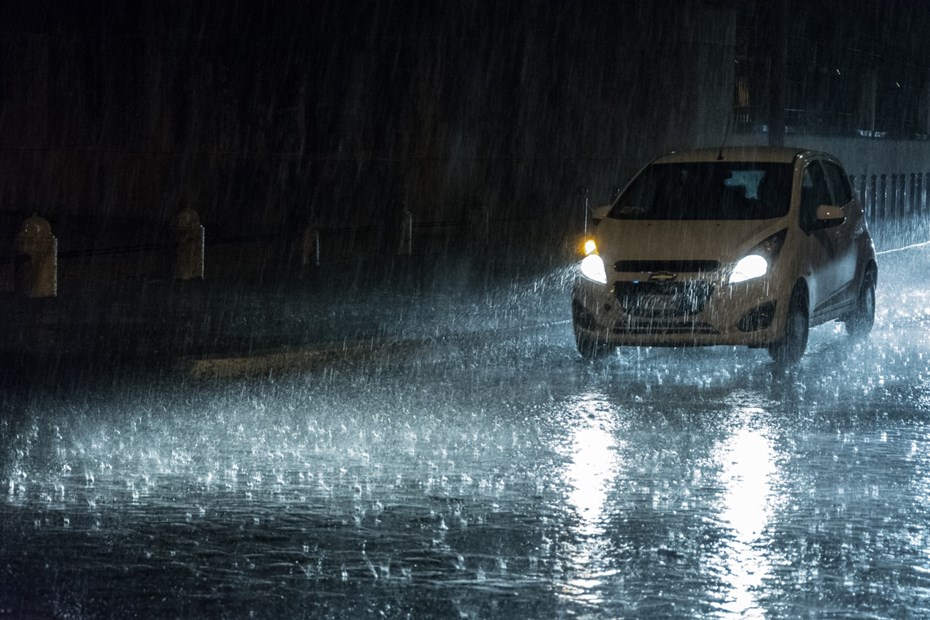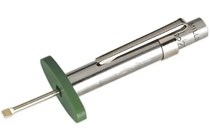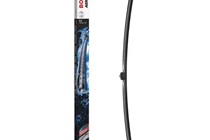The UK is a famously rainy place, but really heavy downpours are seemingly becoming a more regular occurrence. Get caught in one while you’re out on the road and it can turn driving into a really rather horrible experience. Even more so if there’s standing water. But there are techniques you can employ that make driving in heavy rain much safer.
In this article, we’re going to cover exactly what those techniques are, including when and how to use them. We’ll also point out some things you can do to make sure your car’s in prime condition for dealing with heavy rain, further enhancing safety for you, your passengers and other road users.
Use your car’s wipers
This may sound obvious, but it’s worth being clear on the various settings your car’s wipers have, and when it’s advisable to use them. Annoyingly, there isn’t standardised way of turning a car’s wipers on, which can be very confusing if you swap between cars as frequently as Parkers’ writers do.
In most cars, you operate the wipers by lifting, pulling and pushing the left-hand steering column stalk. But the Volkswagen ID.7, for instance, has toggle switches for them on the right-hand stalk. In the Tesla Model Y, you press a button on the central touchscreen. Ideally, you’ll be so familiar with the controls in your car that you can turn the wipers on without thinking.
The front wipers in all cars have at least four settings – single wipe, intermittent, constant and double-speed. Rear wipers have all but double-speed. Your car may also having settings for the interval between intermittent wipes. Many cars have an automatic setting that turns the wipers on as needed, but we’ve found their effectiveness to be variable at best.
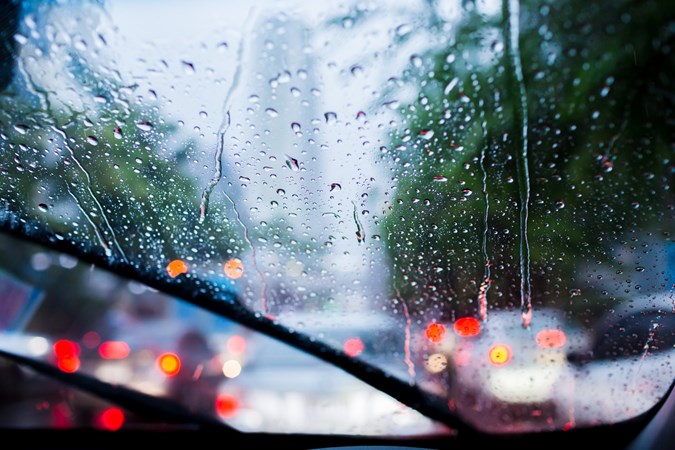
The wipers’ job is to clear your car’s windscreen of water, so use whichever setting does that best in the prevailing conditions. Sometimes, none of them will be ideal, so just go for the least annoying one. If the wipers are scraping across the ‘screen, there isn’t enough water on it.
If your car’s wipers aren’t clearing water properly, it’s likely the windscreen is dirty and/or the wipers are damaged. It pays to spend a spend a bit of time maintaining the windscreen and these products can help.
Parkers' top recommended glass cleaner
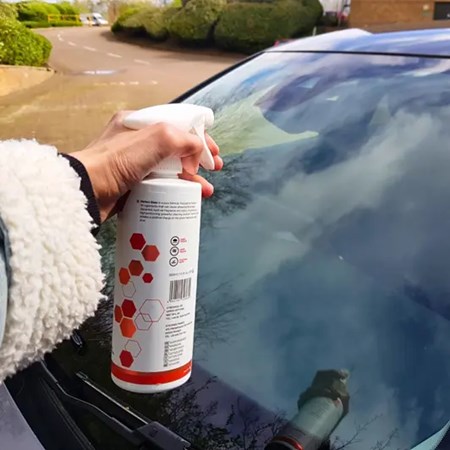

Pros
- Leaves no streaks
- A single spray will do the whole windscreen
Cons
- Smells quite strong
Parkers' top recommended rain repellent
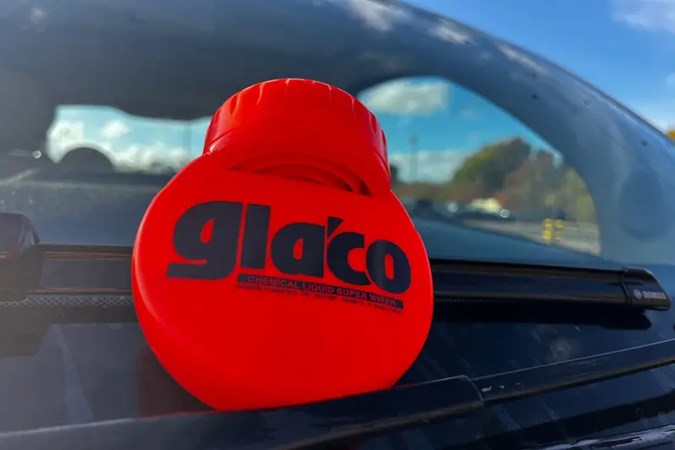

Pros
- Doesn't smear
- Lasts up to 2 months
Cons
- Needs to cure for 10 minutes
Parkers' top recommended wiper blades
Pros
- Fits a wide range of vehicles
- Really good quality
Cons
- Quite expensive
Turn your car’s lights on
Even light rain reduces visibility, so it’s sensible to at least turn your car’s side lights on. Even if you can see perfectly well, your car might not be visible to other road users – turning the lights on ensures you’ll be seen. It can get really dark in heavy rain, at which point dipped headlights may become necessary.
If you’re unsure, look to see other drivers are doing with their lights. Daytime running lights are helpful, but they’re not always enough. The automatic headlights many cars now have are often quite conservative and may turn on in quite light rain. You can read about when you should use your car’s headlights, particularly in winter.
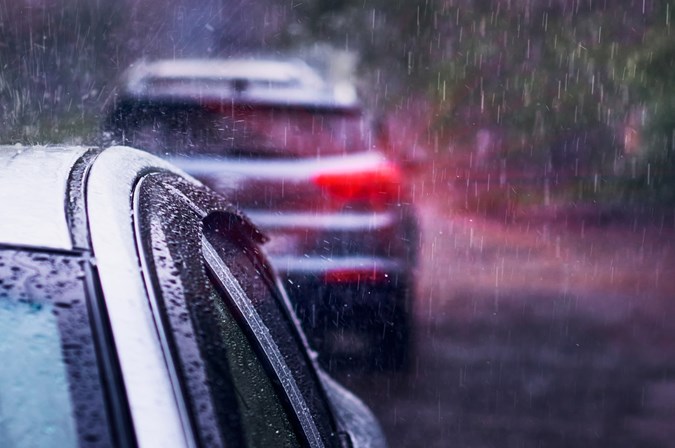
Slow down and keep your distance
You should always reduce your speed and keep your distance from the vehicle in front when driving in reduced visibility because you’re less able to see hazards ahead. Rain adds the complication of a wet, slippery road surface.
That means your car may not respond as quickly to the steering, it’s more likely to skid out of control, and it takes a lot longer to stop. Slowing down and keeping your distance makes it less likely anything untoward will happen, and gives you more time to react and deal with it if something does happen.
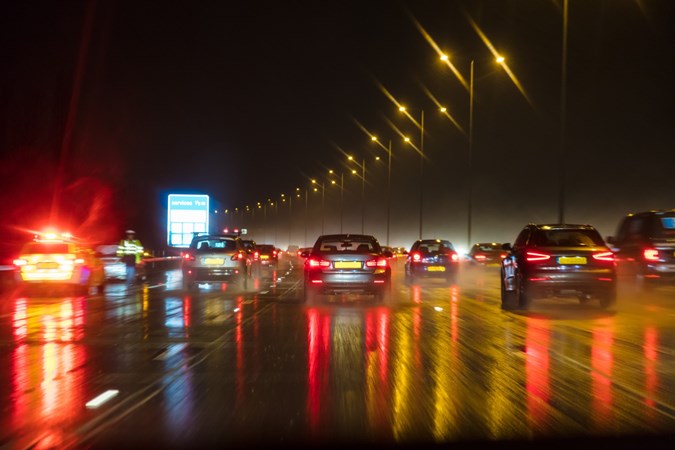
Avoid big puddles, standing water and rivers
Most UK roads are very badly drained, so are prone to developing deep puddles, large patches of standing water, or even flowing rivers. It’s so bad on the M60, for instance, that lane four becomes a no-go zone in really heavy rain.
You need to avoid these bodies of water as best you can. A deep puddle could snatch the steering from your hands, standing water or a river can cause wheelspin. At worst, the car will aquaplane, whereby the tires are lifted off the road surface, which can cause you to lose control of the car completely. The engine could ingest the water, as well, causing major damage.
Drive around big puddles if you can or slow down significantly if you have to drive through, holding the steering as straight as possible. Also slow down if you see standing or flowing water. In either case, lift off the throttle and steer gently – the car won’t respond to sudden inputs. And don’t brake because it could make the situation worse.
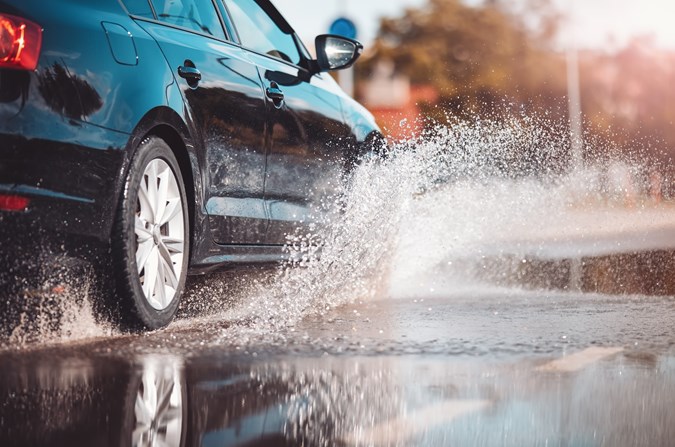
Also be prepared to turn the wipers on in case the windscreen gets doused in water. And look out for puddles on the other side of the road that could cause problems for oncoming traffic. Driving through an actual flood is another matter altogether and we have a guide that runs through how to do it.
Make sure your car’s tyres are in good condition
The four tyres are the only physical point of contact your car has with the road surface. If they’re not in good condition, they’re less able to provide the traction and grip your needs to drive safely. Of particular importance for driving in heavy rain is the depth of the tyre’s tread.
The tread is there to clear water from the road so the rubber can grip the surface. The deeper the tread, the more water can be cleared. Most brand-new tyres have 7-9mm of tread, the legal minimum is 1.6mm. Most experts advise you need new tyres when the tread is down to about 3mm. We compared the performance of brand-new tyres against some with only 1.6mm of tread and the results were alarming.
Parkers' top recommended tread depth gauge
Pros
- Really easy to use
- Good value
Cons
- Small enough to get lost easily
Don’t sit in spray
The water spray thrown by other vehicles’ tyres is a particular hazard of driving in heavy rain, because it significantly reduces visibility. And it can still be a problem long after the rain stopped. We’ve found spray is at its worst on recently resurfaced motorways. That’s because the vehicles are travelling at high speed, and because the type of Tarmac used doesn’t let water pass through.
Lorries throw up the most spray. Being in that spray is a potentially dangerous position because you can’t see very well, and you’re obscured from the lorry driver’s view. So, if you’re behind a lorry, drop back out of its spray. And if you’re overtaking a lorry, get past and through its spray as quickly as possible.
Just so you know, we may receive a commission or other compensation from the links on this website - read why you should trust us.


